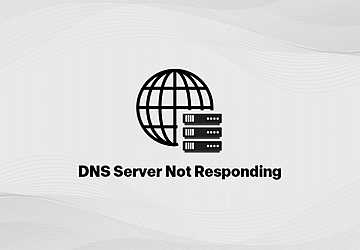8 Common Network Issues and How to Troubleshoot Them?
Have you ever felt the sudden rush of panic when your Wi-Fi symbol disappears, or a web page just won't load? Ever been in the middle of an urgent task only to be halted by a sudden network issue?
It's a feeling many of us know too well. Imagine being in the middle of an important online meeting or finalizing a critical task when, boom, network issues strike!
These minor interruptions may seem harmless at first, but cumulatively, they can amount to significant productivity loss, missed opportunities, or even the dreaded data loss.
Read this blog post to uncover the “8 Common Network Issues and How to Troubleshoot Them”, and empower yourself against those pesky network problems!
8 Network Issues and Their Solution
In the digital age, a smooth and continuous network connection isn't just a luxury—it's a necessity.
These common connectivity culprits are more than just minor inconveniences. They're modern-day obstacles standing between you and your goals.

1. Lost Connection
It’s that eerie silence when your device says it's connected, but nothing seems to work. This is one of the most frequent issues encountered.
Understanding this issue will save you from the helpless feeling of being 'cut off.' Restoring the connection ensures you remain in the loop always.
How to Troubleshoot?
Start by checking if other devices are facing the same issue. If yes, reboot your router. If the problem persists, contact your ISP.
A lost connection can be a hiccup in an otherwise smooth journey. By troubleshooting it, you’re ensuring that your tasks go undisturbed.
2. Slow Internet Speed
Those buffering symbols and endlessly loading pages can be truly testing. Slow speed can hamper productivity and can be a real mood dampener.
A speedy connection boosts efficiency. You can stream, download, or surf without any interruptions.
How to Troubleshoot?
Check if too many devices are connected. Clear cache and cookies on your browser. If the speed remains slow, consider upgrading your plan or speaking to your ISP.
With the right approach, slow speed can be tackled efficiently, paving the way for faster, smoother browsing.
3. Frequent Disconnections
Being online one second and offline the next can be frustrating. Frequent disconnections can disrupt the continuity of tasks.
Solving this ensures a stable connection, letting you work or play without any breaks.
How to Troubleshoot?
Ensure the router is placed centrally. Update firmware if needed. If it continues, the problem might be with your ISP or the hardware.
Stability in connection translates to stability in tasks. Tackling this issue ensures you’re always online when needed.
4. Limited Connectivity
This is when you're connected but with limited access, making certain websites or apps unusable.
Full access ensures you get the complete online experience without any restrictions.
How to Troubleshoot?
Reset the router and reconnect. Check for larger service outages. Contact your ISP for further assistance.
The web is vast, and limited connectivity shouldn't be a barrier. By addressing it, you open doors to unlimited information and entertainment.
5. IP Address Conflict
This happens when two devices on the same local network end up having the same IP address, leading to connectivity issues for one or both devices.
Resolving IP conflicts ensures each device can operate and communicate on the network without interruption.
How to Troubleshoot?
Restart the affected devices to automatically acquire a new IP. If this doesn’t work, manually set a static IP for devices, ensuring no overlap.
A unique identity is essential for smooth interactions in the digital realm. By resolving IP conflicts, you ensure each device stands distinct and connected.

6. DNS Resolution Errors
Domain Name System (DNS) errors crop up when your system can’t translate website names into IP addresses. This typically results in a "server not found" error.
Fixing DNS issues ensures you can access websites without stumbling upon error pages, giving you a seamless browsing experience.
How to Troubleshoot?
Clear the local DNS cache or change your DNS server to a more reliable one, like Google's 8.8.8.8 or Cloudflare’s 1.1.1.1.
Think of DNS as the guidebook of the internet. By ensuring it works flawlessly, you are always directed to the right destination.
7. Network Overload
A sudden drop in speed or performance often signifies that too many devices are using the network simultaneously.
Understanding and managing network load guarantees optimal speed and performance for critical tasks.
How to Troubleshoot?
Prioritize devices/tasks using Quality of Service (QoS) settings in the router. Consider upgrading to a more robust network setup if overloading occurs frequently.
Just as roads can get congested, so can networks. But with the right management, traffic flows smoothly, ensuring everyone reaches their destinations promptly.
8. Unauthorized Access
When unknown devices connect to your network, they can consume bandwidth and potentially pose security risks.
Securing your network keeps your data safe and ensures optimum performance by preventing freeloaders.
How to Troubleshoot?
Regularly monitor devices connected to your network. Use strong, unique passwords and consider enabling MAC address filtering for added security.
Your network is like your digital home. By ensuring only authorized access, you keep intruders out and maintain a safe and efficient environment.
Sealing The Deal
Navigating the online world without hitches is everyone’s dream. Understanding these common network issues and their fixes can transform that dream into reality.
While these tips are a great starting point, remember that technology evolves. Stay updated, stay connected.
With the knowledge you've gained, we hope your journey online is smoother and more efficient.
Ready to face those network challenges head-on? Dive deep, troubleshoot, and ensure a seamless connection!